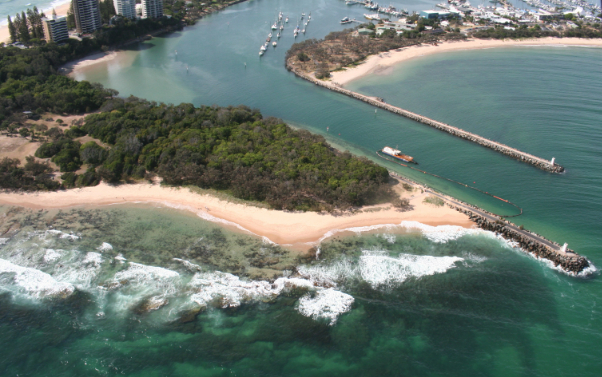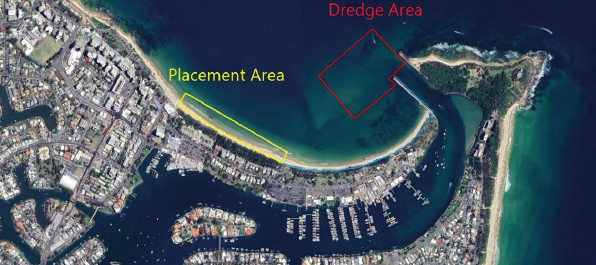A trial to improve a high-risk harbour entrance has yielded some promising results.
The Western Channel Trial was announced late last year and implemented earlier this year, as a possible option to enhance access to the Mooloolaba Harbour during shoaling.
The work was conducted after there were calls from a state MP for “urgent” action in the area, which was labelled “very bad” and “risky” by a former Coast Guard official.
Dredging contractor Halls Contracting set up on site at the end of November, to dredge sand banks within and west of the entrance channel.
This approach was different to previous efforts, which involved dredging just the entrance channel.
The trial, developed by Maritime Safety Queensland in consultation with a local stakeholder reference group, was completed in late March.
MSQ general manager Kell Dillon told Sunshine Coast News it was a relative success.
“The trial was effective during recent minor shoaling in May/June,” he said.
“It should continue to provide improved access through an alternate route to the west of the main channel during shoaling.”

But it’s yet to be seen if it will make a difference during, and after, serious weather events.
“The full effectiveness of the trial will be assessed against major shoaling, such as that which happened early last year,” he said.
“Maritime Safety Queensland will continue to carry out hydrographic surveys to monitor depths in the entrance channel and Western Channel Trial area.”
Much of the dredged sand was relocated to Mooloolaba Beach, to help prop up the shoreline there.
The budget for the work was about $903,000, and jointly provided by MSQ’s Maritime Infrastructure Investment Program and Sunshine Coast Council, which contributed $220,000.

The trial was initiated following community concern about the entrance to the Mooloolah River, which is home to the Mooloolaba Harbour.
Local state MP Fiona Simpson called for “urgent” action, while former Mooloolaba Coast Guard deputy commander Rod Ashlin said the area was “very bad” and “risky”.
“Vessels are getting in trouble on a very constant basis, and we have to go out and guide people back in,” he told SCN last year.
“It’s even risky for us a lot of the time. There are breaking waves, so you have got to duck around them.
“Even if you know the best track to get through, there’s only 1.5m depth at lowest tide and that can be even less if you are in the trough of a wave at the time. It’s meant to be 2.5m.”
Former vice-commodore of the Mooloolaba Yacht Club, Dwight Campbell, said last year that dangerous conditions at the harbour entrance had destroyed the area’s reputation for sailing.
“It’s now known among the boating community as a place to avoid because of the danger it represents,” he said.
For more information on the project, see Mooloolaba Boat Harbour Dredging.






